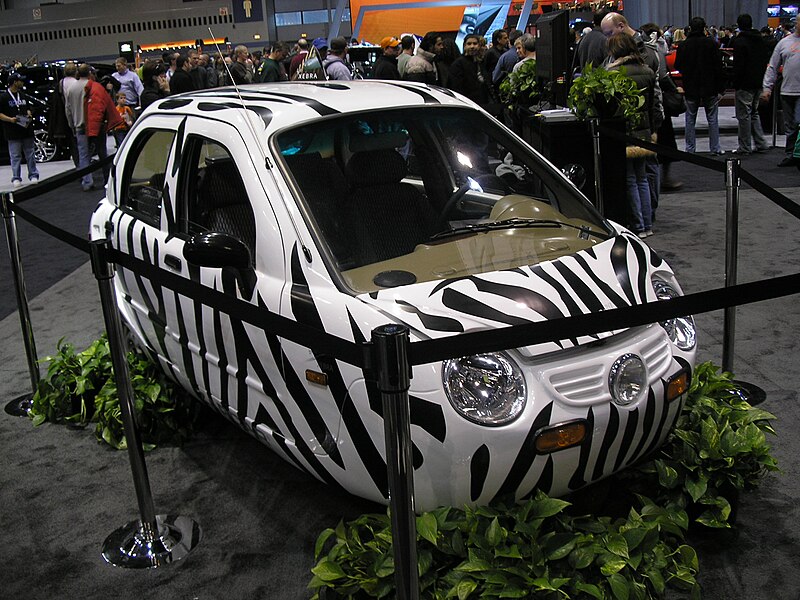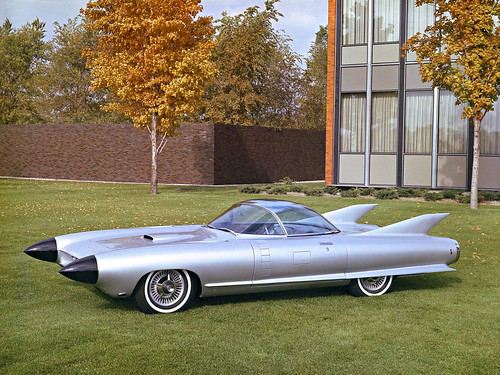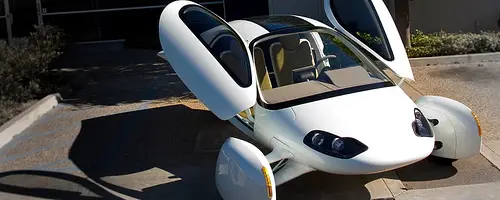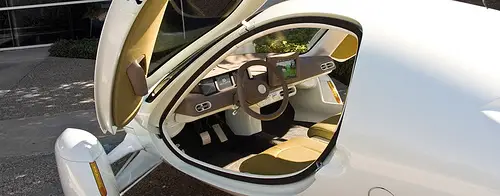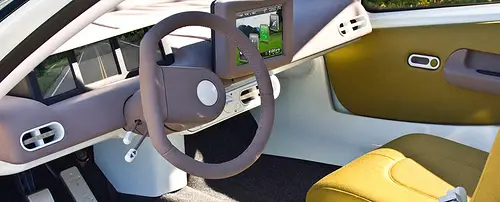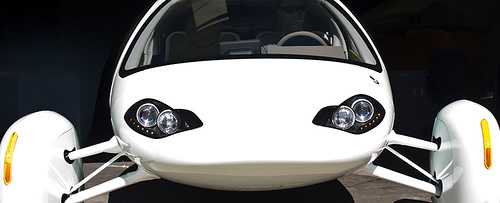
Home >
Concept Car >
micro-subcompact >
New York >
Scion
> Concept Car : Scion to unveil a micro-subcompact in New York
Concept Car : Scion to unveil a micro-subcompact in New York
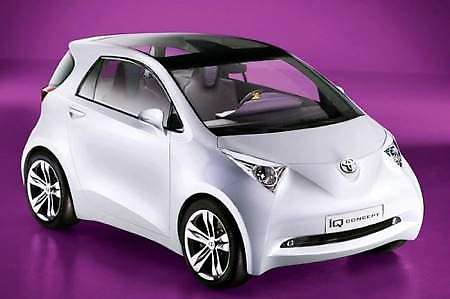
Scion has revealed that it will be presenting a micro-subcompact concept car at the upcoming New York Auto Show. The auto brand did not reveal anything else, other than the concept reflects Scion’s youthful image and represents a new segment for the brand aimed toward the growing urbanization trend.
But we are 99.9% sure that Scion is actually talking about a re-badged version of the Toyota iQ micro car for the U.S market. If this is the case, which I am sure it is, expect Scion to fit the new 1.33 liter engine with a dual VVT-i system that is capable of 99HP into the engine bay. The engine can be mated to either a 6 speed manual or a CVT transmission while fuel consumption figure with the manual tranny is rated at 58.9 miles to the gallon, and 55.4 miles to the gallon with the CVT.
Concept Car : Renault ONDELIOS
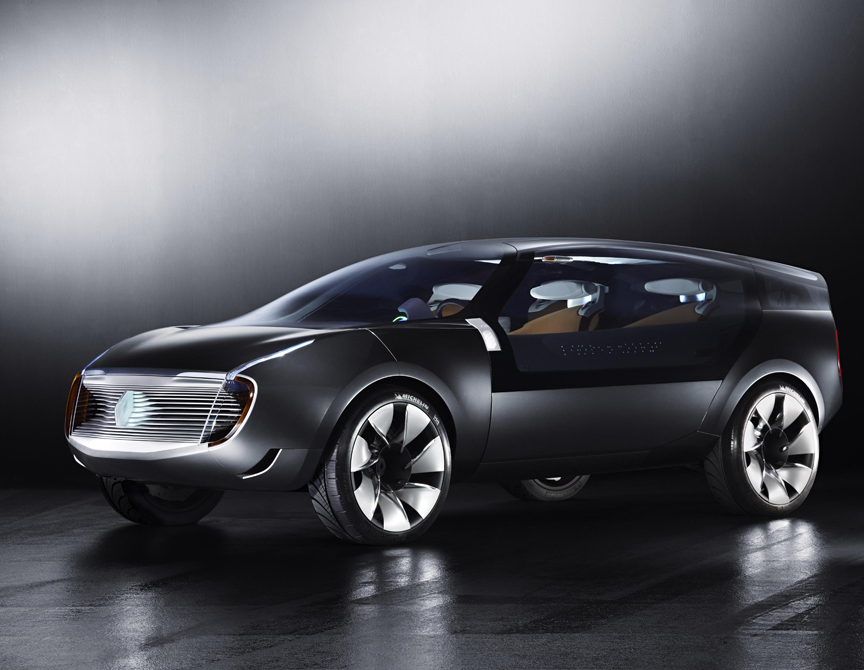
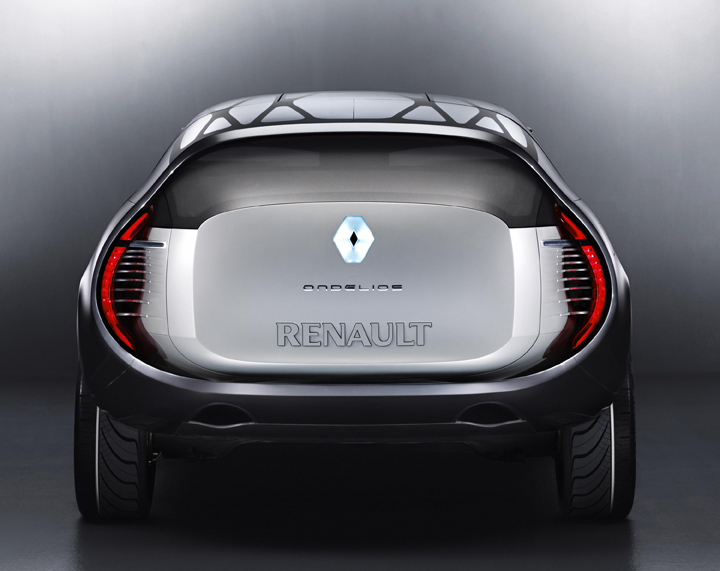
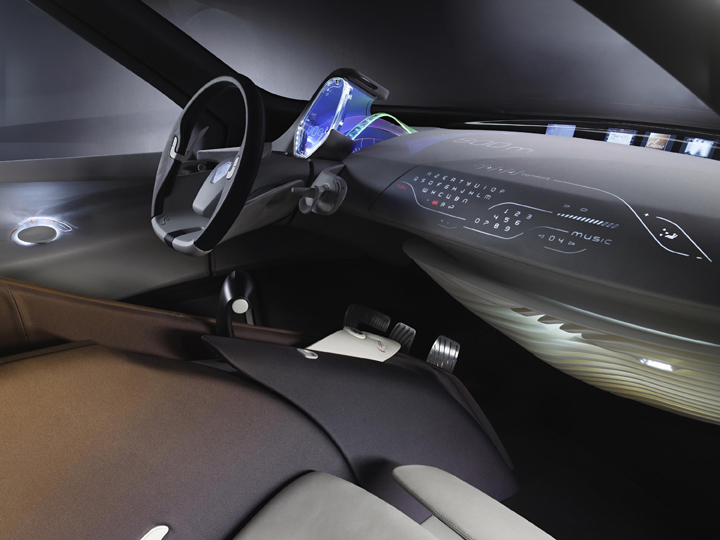
ONDELIOS: AN ENVIRONMENTALLY-FRIENDLY LONG-HAUL JOURNEY
PARIS - September 10, 2008: The Paris Motor Show sees the wraps come off Renault's top-of-the-range concept car Ondelios designed for lovers of long-haul travel who set store by comfort and refinement. Ondelios epitomizes Renault’s vision of the high-end crossover, combining a comfortable ride with respect for the environment. Clear illustrations of that vision are the vehicle’s ethereal design, its interior layout, and an original hybrid powertrain.
A sleek design that answers the call of the open road
The 4.8-metre-long, 1.6-metre high Ondelios has drawn inspiration from the world of aviation design to deliver high drag efficiency and a Cd of just 0.29. This long-distance voyager boasts sleek, smooth, amazingly fluid lines that make it appear as though it glides over the ground. It embodies Renault’s vision of high-end car.
"Ondelios is inspired by motion rather than speed and is a whole new response to the call of the open road," enthuses Patrick Le Quément, Renault’s Design Director.Click PLAY to watch the promo video
The aluminium-finish grille is flanked by headlamp units that also suggest flowing motion, while its high-performance LED headlights are both longer lasting and more efficient. Another feature of Ondelios' aerodynamic styling is the boomerang-shaped tail lights. They are built into the bodywork and ringed with air extractors to control the flow of air from the wheel arches.
The glazed roof further emphasises the vehicle’s airy look and feel, bathing the interior in natural light. The steeply raked windscreen, which extends well down the bonnet, further accentuates this ethereal feel.
"We think of it as made from a single material, where the body and glazed areas merge into one. Ondelios is a glimpse of what the automobile might be in the medium term future," adds Patrick Le Quément.
The butterfly-type side doors, which also feature an extensive glazed area, add a further touch of elegance to the car’s overall styling. They swing out and upwards as the sills slide down to facilitate ingress.
The dark blue anthracite of the bodywork blends perfectly with the tinted glazed area, making the car look as if it were all of a piece and a single colour. The tailgate’s upper section rounds off the sleek, aerodynamic lines with a profiled glareshield that slides inwards to air and cool the cabin.
Ondelios sits on seven-spoke, 23-inch aluminium alloy wheels which contribute to its profiled styling. The propeller-like hubs draw airflow from the sides of the car to prevent turbulence. They operate in conjunction with the rim-side brake discs to ensure they suck in air effectively.
The sleek sidewalls of the large diameter 255/40 Michelin Pilot Sport tyres deliver outstanding drag performance. Their tread pattern is designed to minimise deformation of the contact patch while on the move to help curb rolling resistance.
The tread has efficient, active flow channels which, together with the wide circumferential groove that helps clear water, strengthen the image of a high-end, high-tech tyre.
Business-class comfort for a long-haul journey
The elegance of the Ondelios interior is in harmony with the call of the open road suggested by its exterior. To begin with, its layout is designed to profit from all the available space. There are three rows of seats that offer individual seating for six. With their cantilever mounts they give the impression of floating, while their kinematics are redolent of airplane seats. The electrically adjustable backs fold into comfortable, business-class positions, while occupants can deploy and retract their footrests at will. Although their slim lines speak of lightness, they are designed, like giant leaves, to hug their occupants who can curl up in them to enjoy the comfort and support they afford. The height of the seats is carefully designed to ensure occupants are perfectly at ease when they talk to each other.
Unlike conventional door opening systems, the doors are hinged to the roof, which makes getting into the car extremely easy. The second row of seats slide forward and folds down to facilitate access to the third row.
In addition to seating comfort, the cabin exudes a highly refined ambience. The materials used are drawn from contemporary interior design and give the impression of sitting in a lounge on wheels. They blend soft, supple textures like light grey leather and fabric, as seen on the dashboard, seats and door panels. The colour of the seatbacks blends gradually from ochre to purple, further enhancing the sense of security and comfort.
Interior features and fittings are both modern and intuitive. The ergonomically designed controls, in keeping with Renault’s touch design approach, afford users efficient, comfortable ease of use.
The ample, flowing yet sober design of the broad dashboard echoes the car’s aerodynamic exterior. It is further highlighted by a roomy, suspended stowage compartment which is protected by a lit shell, while all the dashboard’s functional components are particularly userfriendly:
- active display skins show driver aid and ride information; - a monitor at the base of the windscreen displays the different menus and pictures from the door mirror cameras; - three large strip displays provide driving-related information, revs and how the hybridized drivetrain is operating; - a digital speedometer.
The technologies with which Ondelios is equipped enhance the collective and individual wellbeing of all occupants. All the passengers, including those in the back row, have their own Samsung interactive portable multimedia devices which they can use for sharing data or multiplayer gaming. Speakers are also incorporated into the headrests and a multizone HVAC system enables each passenger to set the temperature to his or her own liking.
The smart technologies that have gone into designing Ondelios help drivers to settle in at the wheel, include a Samsung cell phone which also acts as a hands-free door lock recognises the driver and loads all his or her personal settings, e.g. seat-adjustment settings and favourite music. The vehicle adds a final, friendly touch in the form of the back-lit logo which lights up to show that it has recognised the driver.
An environmentally friendly voyagerTo complement the extensive work that has gone into Ondelios’s aerodynamics, some of the car’s structural parts are made from natural flax fibre for greater recyclability. In keeping with the commitment to make the car as light as possible, its body is made from carbon and the glazed areas from polycarbonate.
Ondelios is powered by a hybrid powerplant which combines a more powerful 205hp (150kW) version of the 2.0 dCi engine, with two 20kW electric motors at the front and rear. They operate in mild hybrid mode, giving the engine extra boost as required. They use a brake and boost system, recovering energy during braking then delivering it to the engine to boost acceleration. The front motor also uses fuel-saving stop-start technology.
The electric motor mounted on the rear axle drives the rear wheels when the ESP sensors detect a loss of traction, thus giving Ondelios the capability of a 4WD vehicle. The car is equipped with a lithium-ion battery that can deliver power of up to 4kW/h.
With torque of 450Nm between 1,700 and 3800rpm, the diesel engine provides comfort and flexibility at all engine speeds for long-distance driving pleasure. The 2.0 dCi unit takes Ondelios from a standing start to 100kph in just 7.8 seconds. Driving through a seven-speed, double-clutch gearbox, it affords outstanding driving pleasure, while keeping fuel consumption at a frugal 4.5 litres/100km and CO2 emissions at a lowly 120g/km – very impressive for a topof- the-range vehicle.
Similarly, the body, chassis design and hybrid powertrain contribute decisively to protecting the environment.
Ondelios is a long-distance travel-loving aerodynamic crossover born for the open road. It is proof that caring for occupants and the environment is entirely compatible. Ondelios is a concept car that illustrates Renault’s vision of the high-end car of the near future.
PARIS - September 10, 2008: The Paris Motor Show sees the wraps come off Renault's top-of-the-range concept car Ondelios designed for lovers of long-haul travel who set store by comfort and refinement. Ondelios epitomizes Renault’s vision of the high-end crossover, combining a comfortable ride with respect for the environment. Clear illustrations of that vision are the vehicle’s ethereal design, its interior layout, and an original hybrid powertrain.
A sleek design that answers the call of the open road
The 4.8-metre-long, 1.6-metre high Ondelios has drawn inspiration from the world of aviation design to deliver high drag efficiency and a Cd of just 0.29. This long-distance voyager boasts sleek, smooth, amazingly fluid lines that make it appear as though it glides over the ground. It embodies Renault’s vision of high-end car.
"Ondelios is inspired by motion rather than speed and is a whole new response to the call of the open road," enthuses Patrick Le Quément, Renault’s Design Director.Click PLAY to watch the promo video
The aluminium-finish grille is flanked by headlamp units that also suggest flowing motion, while its high-performance LED headlights are both longer lasting and more efficient. Another feature of Ondelios' aerodynamic styling is the boomerang-shaped tail lights. They are built into the bodywork and ringed with air extractors to control the flow of air from the wheel arches.
The glazed roof further emphasises the vehicle’s airy look and feel, bathing the interior in natural light. The steeply raked windscreen, which extends well down the bonnet, further accentuates this ethereal feel.
"We think of it as made from a single material, where the body and glazed areas merge into one. Ondelios is a glimpse of what the automobile might be in the medium term future," adds Patrick Le Quément.
The butterfly-type side doors, which also feature an extensive glazed area, add a further touch of elegance to the car’s overall styling. They swing out and upwards as the sills slide down to facilitate ingress.
The dark blue anthracite of the bodywork blends perfectly with the tinted glazed area, making the car look as if it were all of a piece and a single colour. The tailgate’s upper section rounds off the sleek, aerodynamic lines with a profiled glareshield that slides inwards to air and cool the cabin.
Ondelios sits on seven-spoke, 23-inch aluminium alloy wheels which contribute to its profiled styling. The propeller-like hubs draw airflow from the sides of the car to prevent turbulence. They operate in conjunction with the rim-side brake discs to ensure they suck in air effectively.
The sleek sidewalls of the large diameter 255/40 Michelin Pilot Sport tyres deliver outstanding drag performance. Their tread pattern is designed to minimise deformation of the contact patch while on the move to help curb rolling resistance.
The tread has efficient, active flow channels which, together with the wide circumferential groove that helps clear water, strengthen the image of a high-end, high-tech tyre.
Business-class comfort for a long-haul journey
The elegance of the Ondelios interior is in harmony with the call of the open road suggested by its exterior. To begin with, its layout is designed to profit from all the available space. There are three rows of seats that offer individual seating for six. With their cantilever mounts they give the impression of floating, while their kinematics are redolent of airplane seats. The electrically adjustable backs fold into comfortable, business-class positions, while occupants can deploy and retract their footrests at will. Although their slim lines speak of lightness, they are designed, like giant leaves, to hug their occupants who can curl up in them to enjoy the comfort and support they afford. The height of the seats is carefully designed to ensure occupants are perfectly at ease when they talk to each other.
Unlike conventional door opening systems, the doors are hinged to the roof, which makes getting into the car extremely easy. The second row of seats slide forward and folds down to facilitate access to the third row.
In addition to seating comfort, the cabin exudes a highly refined ambience. The materials used are drawn from contemporary interior design and give the impression of sitting in a lounge on wheels. They blend soft, supple textures like light grey leather and fabric, as seen on the dashboard, seats and door panels. The colour of the seatbacks blends gradually from ochre to purple, further enhancing the sense of security and comfort.
Interior features and fittings are both modern and intuitive. The ergonomically designed controls, in keeping with Renault’s touch design approach, afford users efficient, comfortable ease of use.
The ample, flowing yet sober design of the broad dashboard echoes the car’s aerodynamic exterior. It is further highlighted by a roomy, suspended stowage compartment which is protected by a lit shell, while all the dashboard’s functional components are particularly userfriendly:
- active display skins show driver aid and ride information; - a monitor at the base of the windscreen displays the different menus and pictures from the door mirror cameras; - three large strip displays provide driving-related information, revs and how the hybridized drivetrain is operating; - a digital speedometer.
The technologies with which Ondelios is equipped enhance the collective and individual wellbeing of all occupants. All the passengers, including those in the back row, have their own Samsung interactive portable multimedia devices which they can use for sharing data or multiplayer gaming. Speakers are also incorporated into the headrests and a multizone HVAC system enables each passenger to set the temperature to his or her own liking.
The smart technologies that have gone into designing Ondelios help drivers to settle in at the wheel, include a Samsung cell phone which also acts as a hands-free door lock recognises the driver and loads all his or her personal settings, e.g. seat-adjustment settings and favourite music. The vehicle adds a final, friendly touch in the form of the back-lit logo which lights up to show that it has recognised the driver.
An environmentally friendly voyagerTo complement the extensive work that has gone into Ondelios’s aerodynamics, some of the car’s structural parts are made from natural flax fibre for greater recyclability. In keeping with the commitment to make the car as light as possible, its body is made from carbon and the glazed areas from polycarbonate.
Ondelios is powered by a hybrid powerplant which combines a more powerful 205hp (150kW) version of the 2.0 dCi engine, with two 20kW electric motors at the front and rear. They operate in mild hybrid mode, giving the engine extra boost as required. They use a brake and boost system, recovering energy during braking then delivering it to the engine to boost acceleration. The front motor also uses fuel-saving stop-start technology.
The electric motor mounted on the rear axle drives the rear wheels when the ESP sensors detect a loss of traction, thus giving Ondelios the capability of a 4WD vehicle. The car is equipped with a lithium-ion battery that can deliver power of up to 4kW/h.
With torque of 450Nm between 1,700 and 3800rpm, the diesel engine provides comfort and flexibility at all engine speeds for long-distance driving pleasure. The 2.0 dCi unit takes Ondelios from a standing start to 100kph in just 7.8 seconds. Driving through a seven-speed, double-clutch gearbox, it affords outstanding driving pleasure, while keeping fuel consumption at a frugal 4.5 litres/100km and CO2 emissions at a lowly 120g/km – very impressive for a topof- the-range vehicle.
Similarly, the body, chassis design and hybrid powertrain contribute decisively to protecting the environment.
Ondelios is a long-distance travel-loving aerodynamic crossover born for the open road. It is proof that caring for occupants and the environment is entirely compatible. Ondelios is a concept car that illustrates Renault’s vision of the high-end car of the near future.
SRT-10 Dodge Viper The fastest sports car
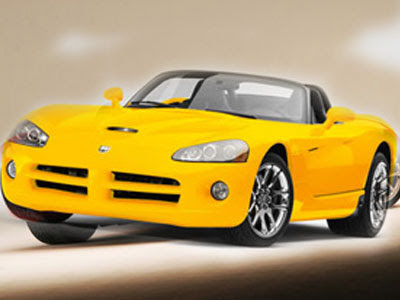
SRT-10 Dodge Viper The fastest sports car
SRT-10 Dodge Viper Powered by a 8.3 Litre V10 which is essentially a Dodge truck V8 with two extra cylinders grafted on, the Viper has incredible straight line performance. Handling and build quality of the Viper is however less refined and reassuring compared to its European rivals.Dodge Viper began in 1996.
--------------------------------------------------------------------
External review by Rodney Rawson
The Dodge Viper - The viper idea all started in 1988 with just a clay model. Soon after the car was was constructed and displayed at put on display auto shows. The Chrysler Corporation did not expect the Viper to be such a big hit. The viper certainly got a lot of people interested, and in 1992 The first Viper RT/10 Roadster was produced. It initially came in only two color choices, black and the more common red. In 1996 The Dodge Viper GTS was introduced. The GTS was a hard top instead of the soft top RT/10.

SRT-10 Dodge Viper The fastest sports car
In the late 1980's and early 90's Chrysler was running out of money, and fast, and that is part of the reason for the Viper, they needed a 'halo car' car that could help them with their money problems and it worked.
In 1994 a television series starring the Dodge Viper was aired on NBC it was called of course, Viper. The show took place in a futuristic city and the Viper was a type of police car. It starts out like an ordinary Viper and with the push of a button it turned into the Defender, the ultimate crime fighting machine. Chrysler created the show to help there sales with the viper.
In 2003 the Dodge Viper was changed dramatically, in both appearance and performance. The Dodge Viper was the fastest sports car for under 100 thousand, until the Chevrolet Corvette ZO6 came along. Dodge plans to counter the Corvette with a new, faster and nicer Viper in 2008. Let's hope. The Viper is a true American sports car.
SRT-10 Dodge Viper The fastest sports car

SRT-10 Dodge Viper The fastest sports car
SRT-10 Dodge Viper Powered by a 8.3 Litre V10 which is essentially a Dodge truck V8 with two extra cylinders grafted on, the Viper has incredible straight line performance. Handling and build quality of the Viper is however less refined and reassuring compared to its European rivals.Dodge Viper began in 1996.
--------------------------------------------------------------------
External review by Rodney Rawson
The Dodge Viper - The viper idea all started in 1988 with just a clay model. Soon after the car was was constructed and displayed at put on display auto shows. The Chrysler Corporation did not expect the Viper to be such a big hit. The viper certainly got a lot of people interested, and in 1992 The first Viper RT/10 Roadster was produced. It initially came in only two color choices, black and the more common red. In 1996 The Dodge Viper GTS was introduced. The GTS was a hard top instead of the soft top RT/10.

SRT-10 Dodge Viper The fastest sports car
In the late 1980's and early 90's Chrysler was running out of money, and fast, and that is part of the reason for the Viper, they needed a 'halo car' car that could help them with their money problems and it worked.
In 1994 a television series starring the Dodge Viper was aired on NBC it was called of course, Viper. The show took place in a futuristic city and the Viper was a type of police car. It starts out like an ordinary Viper and with the push of a button it turned into the Defender, the ultimate crime fighting machine. Chrysler created the show to help there sales with the viper.
In 2003 the Dodge Viper was changed dramatically, in both appearance and performance. The Dodge Viper was the fastest sports car for under 100 thousand, until the Chevrolet Corvette ZO6 came along. Dodge plans to counter the Corvette with a new, faster and nicer Viper in 2008. Let's hope. The Viper is a true American sports car.
Home >
aerodynamics >
Cars >
Concept Car >
Concept cars >
Ferrari >
ferrari zobin
> Concept Car : Ferrari Zobin
Concept Car : Ferrari Zobin
Home >
athletic >
Concept Car >
dream >
Lovegrove >
parts.drivers >
passion >
Ultimate >
vehicle
> Concept Car
Concept Car

The following two exclusive images show Lovegrove's latest passion and ultimate dream -- to design a car. His inspiration for this concept was to create a vehicle that contributes to a cleaner, more joyful world.

It would contain few parts, be athletic but not aggressive, lean, efficient, and transparent in order to allow drivers to look out at the world going by.
Home >
aerodynamics >
CAR >
Concept Car >
drivers >
E1 >
Electric >
KAAN >
lightning >
Mazda >
odd car >
Race >
unique >
vehicle >
wheel
> Concept Car : MAZDA KAAN E1 RACE CAR
Concept Car : MAZDA KAAN E1 RACE CAR
Unlike some of the other entrants in this year’s LA competition, Mazda hasn’t forgotten to pen its concept with childlike awe; the Kaan features a sweeping, aerodynamic shape constructed with plenty of carbon. The centre-less wheels look strangely like beer bottle openers from the side - though not many bottle openers have light beams running across their centres.

Also unique among all the entrants is the idea that Kaans don’t compete alone, but rather in a peloton - a close knit pack of cars in formation like cyclists in a race. According to Mazda, the closer the pack sticks together, the more aerodynamic and thus faster it becomes. A lightning bolt inspired all that, allegedly.

Early Retirement or Podium Finish: Finishes just outside the top three when one of the peloton gets too close and clips another during the final lap, causing a multiple comedy tankslapper among the entire pack.
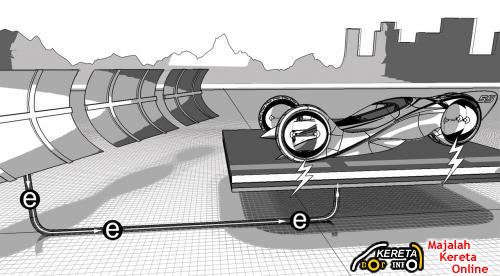
The MAZDA KAAN is an electric race car designed to compete in the E1 races, the pinnacle of international motorsports in terms of technology and popularity. In 2025, California freeways have been resurfaced with a sub-level electro-conductive polymer that powers the electric cars of the modern world. MAZDA’s patented electronic tire system uses this technology to power the KAAN to reach 250 mph with no harmful emissions!
The vehicles are piloted by individual drivers but teams are made up of thirty cars, all on the track together. Using strategies similar to those in cycling peletons, the tighter the group sticks together, the more aerodynamic and powerful it becomes.
Inspiration for the KAAN comes from electric fields and textures seen in nature, particularly those in a lightning bolt. The car is uniquely designed around its powerful electric wheels while the cockpit acts as a capsule to safely house the driver, allowing for tighter peloton formations and a team victory.

Also unique among all the entrants is the idea that Kaans don’t compete alone, but rather in a peloton - a close knit pack of cars in formation like cyclists in a race. According to Mazda, the closer the pack sticks together, the more aerodynamic and thus faster it becomes. A lightning bolt inspired all that, allegedly.

Early Retirement or Podium Finish: Finishes just outside the top three when one of the peloton gets too close and clips another during the final lap, causing a multiple comedy tankslapper among the entire pack.

The MAZDA KAAN is an electric race car designed to compete in the E1 races, the pinnacle of international motorsports in terms of technology and popularity. In 2025, California freeways have been resurfaced with a sub-level electro-conductive polymer that powers the electric cars of the modern world. MAZDA’s patented electronic tire system uses this technology to power the KAAN to reach 250 mph with no harmful emissions!
The vehicles are piloted by individual drivers but teams are made up of thirty cars, all on the track together. Using strategies similar to those in cycling peletons, the tighter the group sticks together, the more aerodynamic and powerful it becomes.
Inspiration for the KAAN comes from electric fields and textures seen in nature, particularly those in a lightning bolt. The car is uniquely designed around its powerful electric wheels while the cockpit acts as a capsule to safely house the driver, allowing for tighter peloton formations and a team victory.
Home >
auto >
Concept Car >
Galpin >
Mustang >
mysterious >
radical >
Scythe >
SEMA >
sports >
unveils
> Concept Car : Galpin Auto Sports unveils radical Scythe
Concept Car : Galpin Auto Sports unveils radical Scythe

Remember the mysterious Mustang-based "Project B" concept car that we spied at Galpin Auto Sports last month? The completed version was unveiled this past weekend during a celebrity-packed party at the shop's Southern California facility. We were spot-on with the specs of the car, including the twin-supercharged 5.0L V8 that is pushing out a claimed 1005 horsepower and the massive 16.5-inch Wilwood disc brakes. The Scythe also features unique composite body panels, a wrap-around pillarless glass cockpit, reverse opening vertical doors, and a voice-controlled computer that can offer up weather, traffic, sports, and more through a 3G network connection. Full details on the car can be found in the press release after the jump, and we'll be sure to bring you more photos when we see the car at SEMA in just a few weeks.
[Source: Galpin Auto Sports]
PRESS RELEASE:
Most custom shops have a backyard BBQ for friends when they want to show off a new car. Galpin Auto Sports (GAS) in Van Nuys, California took that concept to a new level on Saturday, October 18, when it debuted one of the most radical custom show cars of the modern era to a packed house of automotive icons, celebrities and media. While smoke rose from the floor and a massive twin supercharged engine crackled in the background, GAS president Beau Boeckmann unveiled Scythe, a one-of-a-kind machine packed with the most advanced onboard technology ever showcased in an automotive application. Other highlights from the evening included the unveiling of Ed "Big Daddy" Roth's long-lost Orbitron show car, a charity silent auction with proceeds going to three local charities and performances by a variety of top-tier rap and rock stars culminating in an all-star jam session between Ozzy Osbourne and members of Guns N' Roses, The Cult, Jane's Addiction and more.
"With Scythe, we set out to showcase all of our unique fabrication abilities here at GAS," Boeckmann says. "From the hand-made composite body and voice-activated onboard computer system, to the twin-supercharged 1,005 horsepower engine, this car was built to make a statement. In the 1950's and '60s, show cars were meant to shock and amaze people, and we wanted the same effect from Scythe but with a high-tech twist. This isn't a hollow concept car, it's a fully functional, incredibly fast and usable machine with a talking onboard computer and over a thousand horsepower running on methanol."
Scythe exemplifies the melding of old-world coachbuilding techniques and cutting-edge digital technology. The GAS team started with a proven performance platform, a 2008 Ford Mustang GT Convertible. After the body panels were removed, the unibody structure was covered in clay, which was sculpted to match renderings drawn by famed Kustom Kulture icon Ed "Newt" Newton. Molds were pulled from the clay sculpture, and composite body panels were formed and fitted to the Mustang pan. Reverse opening vertical doors, a wrap-around pillarless glass cockpit with no B- or C-pillars and custom headlights and taillights surrounded by hand-made aluminum trim are the highlights of the unique design.
The interior features some of the most sophisticated technology ever installed in a vehicle. Scythe features an onboard Shuttle XPC computer that manages every function of the car and is controlled entirely by voice commands. Simply speak to the electronic personal assistant in your own words and through a digital uplink to a 3G network Scythe will provide real-time weather, traffic, sports, stock market and news information and maintain your daily calendar. Other onboard electronics include flush mounted exterior cameras that offer 24-hour monitoring via cell phone or internet and a voice-activated iPod compatible JL Audio 5.1 Surround Sound system allows the driver to choose artist, song or music type verbally.
Scythe also offers unparalleled power and performance. Hand-built by GAS, the twin Magnuson supercharged 5.0L racing engine with custom ported 24-valve SOHC cylinder heads pump out up to 1,005 horsepower. A GAS custom fabricated intake manifold, custom performance grind camshafts and a custom electronic shifter complete the powertrain of this one of a kind vehicle. Other performance advances include a custom Air Ride Technologies suspension system by GAS and an onboard CPU which constantly adjusts ride height for maximum performance. Dual driving positions with retractable motorized steering wheels allows for left and ride side driving control of the vehicle and custom GAS designed brakes using Wilwood 16.5" rotors and 6-piston calipers on all four corners make Scythe stop on a dime.
[Source: Galpin Auto Sports]
PRESS RELEASE:
Most custom shops have a backyard BBQ for friends when they want to show off a new car. Galpin Auto Sports (GAS) in Van Nuys, California took that concept to a new level on Saturday, October 18, when it debuted one of the most radical custom show cars of the modern era to a packed house of automotive icons, celebrities and media. While smoke rose from the floor and a massive twin supercharged engine crackled in the background, GAS president Beau Boeckmann unveiled Scythe, a one-of-a-kind machine packed with the most advanced onboard technology ever showcased in an automotive application. Other highlights from the evening included the unveiling of Ed "Big Daddy" Roth's long-lost Orbitron show car, a charity silent auction with proceeds going to three local charities and performances by a variety of top-tier rap and rock stars culminating in an all-star jam session between Ozzy Osbourne and members of Guns N' Roses, The Cult, Jane's Addiction and more.
"With Scythe, we set out to showcase all of our unique fabrication abilities here at GAS," Boeckmann says. "From the hand-made composite body and voice-activated onboard computer system, to the twin-supercharged 1,005 horsepower engine, this car was built to make a statement. In the 1950's and '60s, show cars were meant to shock and amaze people, and we wanted the same effect from Scythe but with a high-tech twist. This isn't a hollow concept car, it's a fully functional, incredibly fast and usable machine with a talking onboard computer and over a thousand horsepower running on methanol."
Scythe exemplifies the melding of old-world coachbuilding techniques and cutting-edge digital technology. The GAS team started with a proven performance platform, a 2008 Ford Mustang GT Convertible. After the body panels were removed, the unibody structure was covered in clay, which was sculpted to match renderings drawn by famed Kustom Kulture icon Ed "Newt" Newton. Molds were pulled from the clay sculpture, and composite body panels were formed and fitted to the Mustang pan. Reverse opening vertical doors, a wrap-around pillarless glass cockpit with no B- or C-pillars and custom headlights and taillights surrounded by hand-made aluminum trim are the highlights of the unique design.
The interior features some of the most sophisticated technology ever installed in a vehicle. Scythe features an onboard Shuttle XPC computer that manages every function of the car and is controlled entirely by voice commands. Simply speak to the electronic personal assistant in your own words and through a digital uplink to a 3G network Scythe will provide real-time weather, traffic, sports, stock market and news information and maintain your daily calendar. Other onboard electronics include flush mounted exterior cameras that offer 24-hour monitoring via cell phone or internet and a voice-activated iPod compatible JL Audio 5.1 Surround Sound system allows the driver to choose artist, song or music type verbally.
Scythe also offers unparalleled power and performance. Hand-built by GAS, the twin Magnuson supercharged 5.0L racing engine with custom ported 24-valve SOHC cylinder heads pump out up to 1,005 horsepower. A GAS custom fabricated intake manifold, custom performance grind camshafts and a custom electronic shifter complete the powertrain of this one of a kind vehicle. Other performance advances include a custom Air Ride Technologies suspension system by GAS and an onboard CPU which constantly adjusts ride height for maximum performance. Dual driving positions with retractable motorized steering wheels allows for left and ride side driving control of the vehicle and custom GAS designed brakes using Wilwood 16.5" rotors and 6-piston calipers on all four corners make Scythe stop on a dime.
Home >
Concept Car >
Design >
model >
panoramic >
Peugeot >
RD >
Revealed >
Shanghai >
vehicle
> Concept Car : Peugeot RD Model Revealed in Shanghai
Concept Car : Peugeot RD Model Revealed in Shanghai

The Peugeot RD concept design of 27 year old Carlos Arturo Torres Tovar is now on exhibition as a full-size model at the 2009 Auto Shanghai in China. The Colombian has just graduated from the National University of Colombia where he studied Industrial Design.
His concept car was the winning project in Peugeot's 5th Annual Design Competition which saw prospects from 95 different nationalities submit over 2,500 projects. The theme for the contest was "Imagine the Peugeot of the Worldwide Megalopolis of tomorrow" which in essence asked them to picture the transportation needs of future megacities and design a vehicle to satisfy them.
What sold the RD concept for Peugeot and the selected jury was its high road-holding ability with ease of use in congested traffic, the environmentally friendly electric motor and the 3-wheeler's driving sensation of a sedan. It also features panoramic all-around visibility and head-up display. Peugeot has been building this show unit since October 2008.
On top of seeing his design come to life in a 1:1 scale, the winner also takes home a cheque for 10,000 euros and an Xbox 360 game console. Twenty nine short-listed entries also received certain prizes.
His concept car was the winning project in Peugeot's 5th Annual Design Competition which saw prospects from 95 different nationalities submit over 2,500 projects. The theme for the contest was "Imagine the Peugeot of the Worldwide Megalopolis of tomorrow" which in essence asked them to picture the transportation needs of future megacities and design a vehicle to satisfy them.
What sold the RD concept for Peugeot and the selected jury was its high road-holding ability with ease of use in congested traffic, the environmentally friendly electric motor and the 3-wheeler's driving sensation of a sedan. It also features panoramic all-around visibility and head-up display. Peugeot has been building this show unit since October 2008.
On top of seeing his design come to life in a 1:1 scale, the winner also takes home a cheque for 10,000 euros and an Xbox 360 game console. Twenty nine short-listed entries also received certain prizes.
Concept Car : 1972 Maserati Boomerang

Starred in Turin, Geneva, Paris, London, and Barcelona motor shows, then stayed in Spain until 1980 when “rediscovered” outside Benidorm night club. Restoration completed in 1990, then shown from Bagatelle to Pebble Beach. Excellent panel fit, very good paint with few visible flaws- some bubbling at corner under right taillight, small drip on right side vent behind door. Worn window felts, some curb rash on rear alloy wheels. Very good interior, with some scratches on dashboard and instrument binnacle. Some sun-fading on door panel leather.
Stunning Giugiaro designed showcar that influenced the Lotus Esprit, first VW Golf, and a host of others. Sold at Christie’s February 2002 Retromobile sale for $627,923. Seems like a healthy profit, but when viewed in Euros, about the same price in 2002 as now. Since ‘02, has reportedly seen $37k worth of mechanical and electrical work to bring to full roadworthy condition. More likely to be displayed than driven, however. A good investment on the seller’s side, a unique piece of automotive history for the buyer.
Home >
300mpg >
Aptera >
Concept Car >
Does >
electric motor >
Three-Wheeled >
Typ-1 >
vehicle
> Concept Car : Aptera Typ-1 Does 300mpg
Concept Car : Aptera Typ-1 Does 300mpg
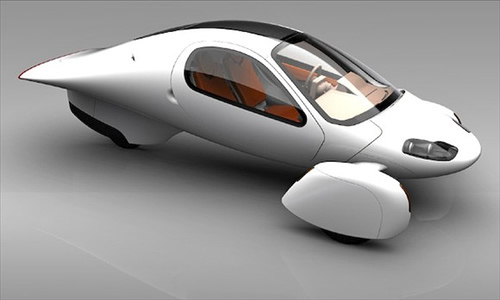
The Aptera Typ-1 Concept Car is a three-wheeled vehicle. The two front wheels are used for steering and the rear wheel is connected to an electric motor. The Typ-1 will consume 60-80 Watt·hours/km at 55 mph (90 km/h), making it a low energy vehicle.
The Typ-1 has a drag coefficient of 0.11, compared with 0.19 for the record-holding EV1.
It has recessed windshield wipers, low rolling resistance tires, and cameras in place of side mirrors. And, did we say it goes 300 miles on a gallon of gas?
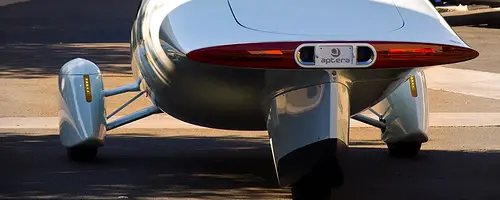
The Typ-1 has a drag coefficient of 0.11, compared with 0.19 for the record-holding EV1.
It has recessed windshield wipers, low rolling resistance tires, and cameras in place of side mirrors. And, did we say it goes 300 miles on a gallon of gas?

Home >
Concept Car >
Coupé >
dragonfly >
mechanism >
Mégane >
model >
Renault >
wings
> Concept Car : Renault Mégane Coupé
Concept Car : Renault Mégane Coupé
Home >
CAR >
Concept Car >
Coupé >
Design >
electric motor >
Futuristic >
Life >
Morgan >
motor
> Concept Car : Morgan Life Car Coupé
Concept Car : Morgan Life Car Coupé
Subscribe to:
Posts (Atom)
Blog Archive
-
▼
2009
(738)
-
▼
May
(27)
- Concept Car : Saab Aero-X
- Concept Car : Zap
- Toyota Concept Car
- Concept Car : BMW Mille Miglia
- Concept Car : Scion to unveil a micro-subcompact i...
- Concept Car : Renault ONDELIOS
- Concept Car : Holden
- SRT-10 Dodge Viper The fastest sports car
- SRT-10 Dodge Viper The fastest sports car
- Concept Car : Ferrari Zobin
- Concept Car
- Toyota concept car
- Concept Car : Chrysler Super Bee
- Concept Car : MAZDA KAAN E1 RACE CAR
- Concept Car : Galpin Auto Sports unveils radical S...
- Concept Car : PONTIAC BONNEVILLE
- Concept Car : 1959 Cadillac Cyclone
- Concept Car : Lexus in Minority Report
- Concept Car : Peugeot RD Model Revealed in Shanghai
- Concept Car : 1941 Chrysler Newport Dual Cowl Phateon
- Concept Car : 1963 AC Cobra
- Concept Car : 1972 Maserati Boomerang
- Concept Car : Mercedes Benz BlueZero
- Concept Car : Daihatsu
- Concept Car : Aptera Typ-1 Does 300mpg
- Concept Car : Renault Mégane Coupé
- Concept Car : Morgan Life Car Coupé
-
▼
May
(27)
